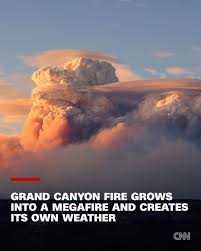Recent Fire Incidents in the Grand Canyon: 2023 Update

Introduction
The Grand Canyon, a UNESCO World Heritage site and one of the most iconic natural wonders of the world, has recently been the site of significant fire activity. This year, the increased frequency and intensity of wildfires have raised concerns not just about the immediate safety of visitors and wildlife, but also about the long-term impact on the ecosystem of this vast national park.
Fire Incidents Overview
As of September 2023, reports indicate that multiple small fires have been detected within the Grand Canyon National Park. The largest, known as the Calf Canyon Fire, initially spanned over 1,200 acres, primarily affecting remote areas to minimize risk to tourists. Firefighters from various local and federal agencies have been engaged in continuous efforts to combat these blazes using ground crews and aerial support to manage the situation effectively.
Causes and Environmental Impact
Experts suggest that the recent fires can be attributed to prolonged drought conditions exacerbated by climate change, alongside human activities. The combination of high temperatures and dry winds has contributed to the fires’ rapid spread. Though wildfires can play a natural role in forest renewal, the severity and scale of these incidents threaten various species and habitats in the park, making management crucial.
Visitor Safety Protocols
In response to the fires, the National Park Service has implemented several safety protocols. Areas that are deemed unsafe have been closed to visitors, and park officials continue to monitor air quality and risk levels. Education campaigns are also underway to inform tourists about the importance of fire safety and prevention when visiting natural areas, particularly those known to be fire-prone.
Future Outlook
While firefighting efforts have made progress, officials warn that the wildfire season is not over yet and that visitors should remain vigilant. Park authorities are working on long-term management strategies aimed at reducing fire risk, including controlled burns and vegetation management practices. These strategies are essential for preserving the Grand Canyon’s unique environment while ensuring public safety.
Conclusion
The ongoing fire situation in the Grand Canyon underscores the importance of understanding and adapting to the changing climate. As wildfires become more prevalent, park officials and environmentalists emphasize the need for protective measures to safeguard this natural wonder. For visitors, remaining informed and adhering to park guidelines will be crucial this season.








